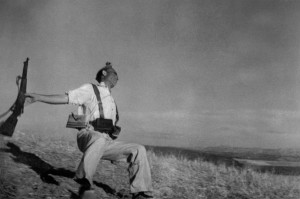At the age of 23, Robert Capa took a photograph that many have labeled the greatest war photograph of all time. Taken during the Spanish Civil War, the renown of Capa’s photograph, Falling Soldier or Death of a Loyalist Soldier, reverberated around the world as it was published and republished in contemporary news magazines. However, Capa’s photo has been shadowed by controversy, including accusations of fakery. Click on the link below and read an analysis on the image by Capa’s biographer, Robert Whelan, on the authenticity of the photograph. Do you find his arguments convincing? Do you think Capa’s photograph is staged or not? And do you think its authenticity matters? If you wish, you can compare Capa’s photograph to another controversial image.
Richard Whelan’s discussion of Capa’s photograph
To complete this homework assignment, please submit a 200-word post.
Please post your responses by Monday, April 30th.





Najja Hennix
I believe the Robert Capa’s photograph; Falling Soldier or Death of a Loyalist Soldier is staged or manipulated. Some of the reason being that they did not have any freedom of movement and also unable to go to active fronts, photographers resorted to pictures of soldiers feigning combat. Also Capa asserted that the photograph was taken at the battle site of Cerro Muriano, but research suggests it was taken in the town of Espejo, 30 miles away. When I first saw the image before reading the article, I thought the image was staged because of the gesture of the falling soldier. This image reminds me of the image that showed a soldier left in between rocks. Both of the images portrait exactly what war is really about and both have been questioned for being staged. We learned and see in class that almost every photograph taken has be manipulated or tweaked a little but the photographer’s hand. I find the reading very convincing and I do not think that authenticity matter all the time. Sometimes a photo is staged to prove a message or create an idea.